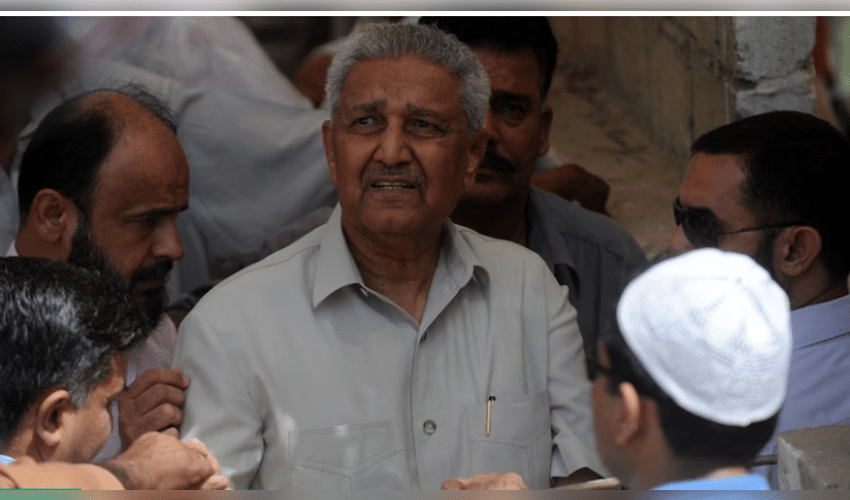Military
The Hidden History Behind Iran's Nuclear Program: How Pakistan's Abdul Qadeer Khan Fueled Tehran's Atomic Ambitions

Iran's nuclear program, a central factor in the ongoing conflict with Israel, has sparked airstrikes, missile attacks, and rising fears of broader regional instability. However, few are aware that Iran's nuclear ambitions were not solely built from scratch; the country significantly advanced its program by acquiring critical technology and expertise from abroad. At the core of this technological leap was Abdul Qadeer Khan, the Pakistani nuclear scientist who is both a national hero and an internationally condemned figure for spearheading the world’s most notorious black-market nuclear network.
Before international alarms were raised over Iran's uranium enrichment at Natanz and its growing weapons-grade capabilities, Khan had already provided Iran with the essential tools to shortcut its nuclear ambitions. His underground empire was in strumental in supplying Tehran with everything it needed, from centrifuge parts to complete weaponization blueprints.
Khan's Nuclear Network: A Brief History
Abdul Qadeer Khan, often called the "father of Pakistan's nuclear bomb," had an academic background in metallurgy and nuclear engineering from European institutions. In the 1970s, he worked at the URENCO plant, where he stole centrifuge designs. By 1975, Khan returned to Pakistan, bringing these stolen blueprints and lists of suppliers, which laid the foundation for Pakistan’s uranium enrichment program at the Kahuta facility (later named Khan Research Laboratories).
As Pakistan neared its first successful nuclear tests in the mid-1980s, Khan expanded his network, leveraging his knowledge and connections to sell nuclear technology to other countries. Components, designs, and even weapons schematics were sold to Iran, Libya, and North Korea. Khan's nuclear network operated secretly, with key players spread across Europe, the UAE (Dubai), Malaysia, South Africa, and Turkey. It was eventually exposed through joint efforts by the U.S., Britain, and the International Atomic Energy Agency (IAEA). Investigations uncovered the full scale of Khan’s illicit dealings, particularly his role in helping Iran with its nuclear weapons program.
How Iran Benefited from Khan's Network
Iran’s nuclear program did not develop from the ground up but was heavily supported by Khan’s black-market supplies:
Blueprints and Designs: In 1987, Iranian officials brokered a deal in Dubai to acquire centrifuge designs, including the P1 and more advanced P2 models, based on European blueprints stolen by Khan.
Centrifuge Parts and Kits: From the early 1990s, Malaysia became a key production hub, where centrifuge parts, including bell jars, rotors, and converters, were manufactured. These components were smuggled through Dubai and ultimately delivered to Iran.
Technical Assistance: Iran’s Natanz enrichment facility, which began operations in the early 2000s, benefited from Khan’s knowledge and components, which significantly accelerated its nuclear development.
Weaponization Blueprints: Declassified documents suggest that Iran was also supplied with detailed designs for implosion-type nuclear bombs, which were likely provided by Pakistan and based on designs originally acquired from China.
Khan’s Global Supply Chain
Khan’s operation functioned like a clandestine industrial network. He took advantage of lax security at European facilities like URENCO in the 1970s to steal centrifuge blueprints. Malaysian factories disguised as legitimate firms, such as Scomi Precision Engineering, produced hundreds of centrifuge parts that were then moved through Dubai shell companies, such as SMB Computers, before being smuggled into Iran.
The 2003 seizure of centrifuge components from a ship in Italy highlighted the global scope of Khan’s operations, which included extensive networks in Turkey, South Korea, and South Africa, among others.
Iran’s Pursuit of the Bomb
By the early 2000s, Iran’s nuclear enrichment program, now propelled by Khan’s contributions, achieved significant milestones, including enrichment levels of 20 percent. Analysts have noted that Iran’s centrifuge technology, still reliant on Khan’s original P1 designs, is now domestically labeled as IR-1 and IR-2, indicating a long-lasting dependence on Khan’s supply chain. Declassified Iranian documents further suggest that Iran received full weaponization blueprints, including bomb designs and compression formulas, from Pakistan, which allowed the country to accelerate its nuclear weapons efforts.



